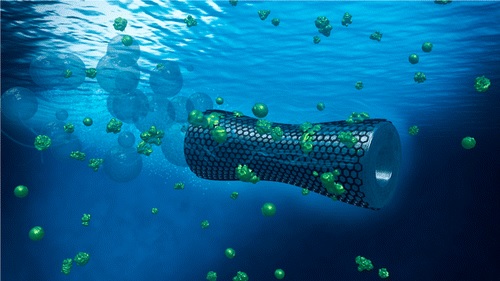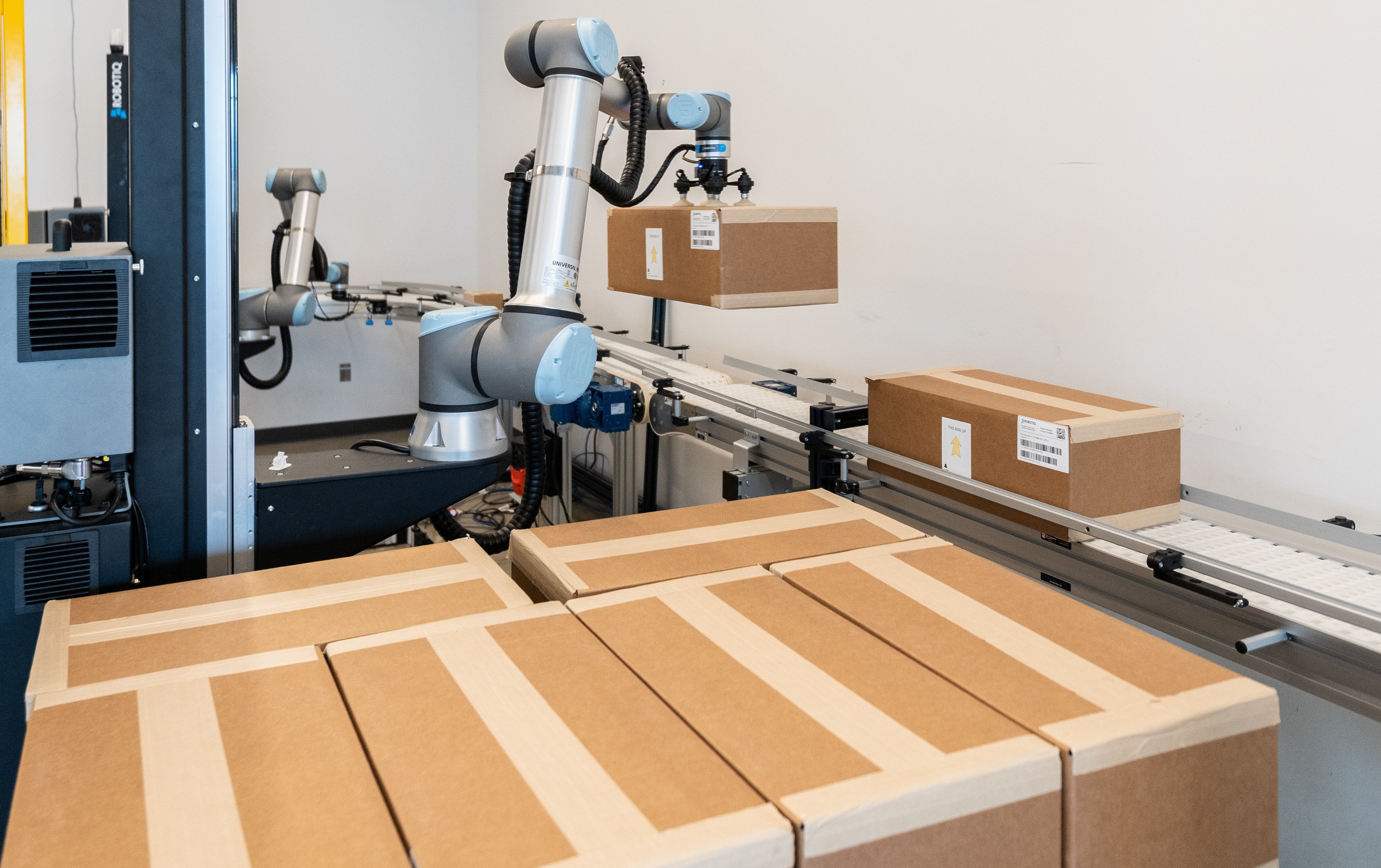What's New In Robotics This Week - Apr 15

Posted on Apr 15, 2016 7:00 AM. 6 min read time
SpaceX landing scores; Robo-truckin' across Europe; Microbots for water detox; We Robot 2016; Schaft's bipedal robot, and much more. Find out what's happening in our robotics universe this week. We hope that the news we have selected will interest and amuse you. Enjoy!
SpaceX successfully lands its rocket on a floating drone ship for the first time (TheVerge)
SpaceX finally pulled off an ocean landing for its Falcon 9 rocket this week, bringing an era of reusable rockets --and lowered space transportation costs-- even closer by using a drone ship that can track the rocket's trajectory and position itself in the ideal spot for landing, SpaceX can dramatically reduce the amount of fuel required to bring the rocket back safely (and reusably).
The whole point of landing these rockets is to help save SpaceX money on launch costs. Right now, most rockets are destroyed or lost after they launch into space, meaning entirely new rockets must be built for each mission. SpaceX hopes to recover as many rockets as possible to cut down on cost of creating new vehicles. The Falcon 9 costs $60 million to make and only $200,000 to fuel. If a recovered rocket doesn't need too much updating and refurbishment between launches, reusability could eliminate a good chunk of that manufacturing cost.
A fleet of trucks just drove themselves across Europe (Quartz)
A fleet of autonomous trucks has traveled thousands of kilometers around Europe as part of the European Truck Platooning Challenge.
When trucks autonomously follow one another, it’s called “platooning.” They’re connected by wifi and can leave a much smaller gap between vehicles than when humans are at the wheel. Platooning can reduce fuel use by up to 15%, prevent human error from causing accidents, and reduce congestion, according to a study by research firm TNO. It also can reduce expenses. Two trucks clocking 100,000 miles annually can save €6,000 on fuel by platooning, compared to driving on cruise control, according to TNO.
Transportation, truck makers, logistic companies and academics all came together for the event, which is part of a Dutch government vision that hopes to see the goods that arrive at Rotterdam port being delivered throughout Europe by autonomous vehicles. Unilever has plans to start a pilot project for such a network in 2017.
Microbots can clean up polluted water (PhysOrg)
Tiny graphene-based microbots, each smaller than the width of a human hair, can be used to absorb heavy, toxic metals from polluted water, according to a new paper published in Nano Letters this week.
A swarm consisting of several hundred thousand of these tiny robots can remove 95% of the lead in polluted water within in one hour.
In the new study, the researchers focused specifically on removing lead from wastewater by designing tube-shaped microbots with three functional layers. The outer layer of graphene oxide adsorbs the lead from the water. The middle layer, nickel, makes the microbots ferromagnetic so that their direction of motion can be controlled by an external magnetic field. The inner layer, platinum, gives the microbots the ability to self-propel themselves through water.
When hydrogen peroxide is added to the wastewater, the platinum decomposes the hydrogen peroxide into water and oxygen microbubbles, and ejecting the microbubbles from the back of the microbot propels it forward.
When the microbots are finished adsorbing the lead, a magnetic field can be used to collect them all from the water. Then the microbots are treated in an acidic solution to remove the lead ions, which can later be recovered and reused. The microbots can also be reused for further lead clean-up.
Alphabet’s secretive Schaft Inc. shows off new bipedal robot in Tokyo (TechCrunch)
A bipedal robot developed by Alphabet-owned Schaft Inc. was revealed in Japan this week.
Most important has to be the walking system. Rather than imitate a human gait, which is a remarkably complex controlled-falling affair, these robots have rigid legs that slide up and down like rails.
This allows them to lift without bending, while joints at the top allow them to be canted in or out and “ankles” at the bottom provide stability on uneven terrain. Batteries and motors are suspended between the legs, creating a naturally low center of gravity.
Considering the future of law and robotics: We Robot 2016 video recap (Robohub)
Topics covered in the videos range from autonomous vehicles and healthcare robots through robocops, institutional options for robot governance and free speech rights for artificial intelligence.
What the Scarlett Johansson Robot Says About the Future (Slate)
Robots like the Scarlett Johansson doppelgänger created by a Hong Kong based fan open up a host of fundamental legal questions around copyright, the use of celebrity images, and the rights of individual creators, writes Margot E Kaminski in Slate.
[...] it could lead to the conclusion that people shouldn’t make robots that look like other real people, at all. Human slavery is often held up as the quintessential illustration of limits on property ownership, both inherently destructive of personhood and fundamentally immoral. What about robotic slavery, wherein the Scarlett Johansson robot feels for all purposes like the human actor you cannot legally enslave?
These conversations are only just beginning. In many ways, robots are not different; they’ll traverse the legal landscape, raising many of the same old legal problems. But in some instances, they force us to return to first principles, and to see different kinds of harms where there weren’t recognized harms before. Scarlett Johansson robot isn’t just creepy. She’s a harbinger of complicated legal and ethical change.
And Finally...
SpaceX Dragon Arrives at ISS (via Space.com)
Industrial Robot Sales Jumped in 2015 Thanks to Cars, China (Fortune)
Improving robot-human collaboration with the help of IBM (Arizona State University)
Will Robots Ever Have Moral Authority? (PDDNet)
Softbank’s Pepper robot enrolls in Japanese high school (Slashgear)
Can Artificial Intelligence Be Ethical? (Project Syndicate)










Leave a comment